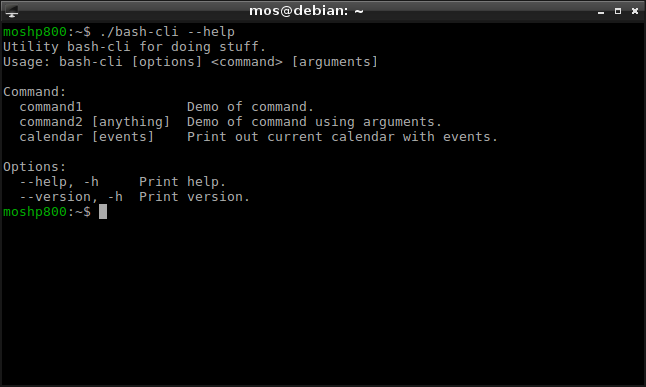
When I was new to Linux, I don't have any other choice but to go to the log directory and look for old files that are larger than the rest and delete them.
#Bash find file length free#
If you are running Java applications like core Java-based programs or web applications running on Tomcat then you can remove those heap dump files and free some space, but the big question is how do you find those? How do you know the size of the biggest file in your file system, especially if you don't know which directory it is? We'll try to find answers to some of those questions in this article. Usually, old files, large Java heap dumps are good candidates for removal and freeing up some space.


#Bash find file length full#
Suppose, your file system is full and you are receiving an alert to remove spaces or if your host is run out of space and your server is not starting up, the first thing you do is f ind the top 10 largest files and see if you can delete them. # Read the ncdu man page to look at all the options and commands.One of the common problems while working in Linux is finding large files to free some space. # Go to the directory you want to analyze or pass the directory path as parameter Otherwise to manually peruse through a file system:Īlternatively, use ncdu which is more useful than the GUI-based Disk Usage Analyzer (baobab): maxdepth 1 -type d -print0 | xargs -0 -I "' | sort -nr | head -n 10 Suggestioncd to a directory you have access to. I had already a situation where an application was (wrongly) creating thousands of small files, and it was hard to find out the disk space's offender. Luizfnpinho said:I was wondering what would be the best way to list the most dense folder, in terms of disk occupation. Once complete it will return the top ten largest files / directories, their sizes and locations. It will take a little time to run as it needs to check every directory of the filesystem. sudo du -aBm / 2>/dev/null | sort -nr | head -n 10ģ. | head -n 10 will list the top ten files/directories returned from the search. | sort -nr is a pipe that sends the output of du command to be the input of sort which is then listed in reverse order. is the root directory, the starting point for the search.Ģ>/dev/null will send any errors to /dev/null ensuring that no errors are printed to the screen. Use the du command to search all files and then use two pipes to format the returned data.ĭu -aBM will search all files and directories, returning their sizes in megabytes. What are the top ten files or directories on our machine? How large are they and where are they located? Using a little Linux command line magic we can target these files with only one line of commands.Ģ. sudo find / -type f -size +100M Finding the 10 Largest Linux Files on Your Drive You should be able to scroll through the returned results and see that the larger files on the pen drive have been included in the results. For this example connect a USB drive with a collection of files on it including some that are over 100MB in size. Search all filesystems for files larger than 100MB. Note that we are using / to set the command to search the entire filesystem from the root of the filesystem. As we are invoking root privileges using sudo we will need to input our password. Search the current filesystem for files larger than 100MB. We might also want to either limit the search to the current filesystem which can be achieved via the -xdev argument, for example when we suspect the files we seek are in our current main filesystem or we can choose not to add the -xdev argument which will then include results from other mounted filesystems, for example an attached USB drive.Ģ. To search the entire filesystem, we will need to use the command with sudo. We may have some files hidden away in our home directory that need removing. It’s sometimes useful to search the whole Linux filesystem for large files. test -type f -size +100M Searching the Whole Linux Filesystem For Large Files This means we can search the test directory from the home directory. We can run the same command as in the previous section but replace the “.” with a specified path. Use the same command, but this time specify a path to search. We only have one file in our test folder Baby_Yoda.obj that is larger than 100MB. Finally the +100M argument specifies that the command will only return files larger than 100MB in size. The -type f argument specifies returning files as results. We are working inside our test directory and the “.” indicates to search the current directory.

Use find to search for any file larger than 100MB in the current directory. We can also use the find command in combination with the -size argument specifying a size threshold where any file larger than specified will be returned.\ġ.
#Bash find file length how to#
In another article, we explained how to find files in Linux using the find command to search based on a filename or part of a filename.


 0 kommentar(er)
0 kommentar(er)
